RCA

RCA – What is it?
If you regularly read this blog, you probably think of root cause analysis when you see RCA. However, if you were living in 1919, RCA would be the nickname of the Radio Corporation of America. That’s the year that the patent trust was formed by General Electric, Westinghouse, AT&T, and United Fruit Company. The new company (held by the trust) bought the rights to American Marconi at the behest of the US Navy. In 1932, an anti-trust suit forced RCA to become an independent corporation.

Also, you might think of RCA Victor and the iconic RCA mascot.
Yes, RCA is still a brand that is licensed to others, but the corporation no longer exists.
But let’s look into the 21st Century RCA, Root Cause Analysis, more in the next section.
What is RCA – Root Cause Analysis?
RCA (Root Cause Analysis) is a systematic means to identify the root causes of incidents, accidents, precursors incidents (near-misses), and other problems that cause safety, quality, production, and equipment reliability issues.
In the past, we’ve written about the fundamentals of RCA HERE.
And the definition of RCA HERE.
And many other articles about various RCA topics, including:
We also have information about our TapRooT® RCA Courses at THIS LINK.
After reading several of the referenced RCA articles above, you should be very familiar with the topic of root cause analysis.
But What is TapRooT® RCA?
TapRooT® RCA is a systematic, guided process for finding root causes.
It starts with a process (actually two processes) and proven tools.
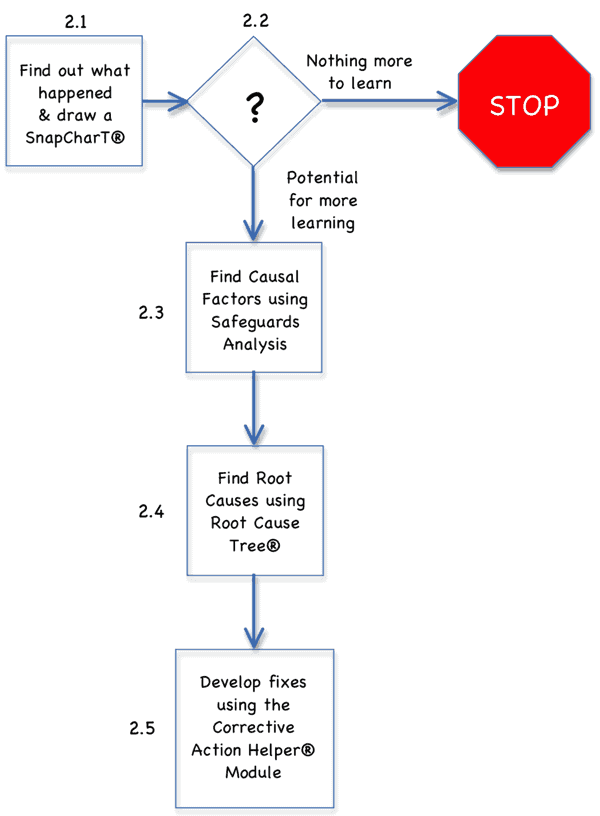
The process above is for simple, low-to-moderate risk incidents that have the potential to be worse (precursor incidents). It helps you perform good, fast investigations using the TapRooT® Root Cause Analysis Tools.
The process below is for major investigations. It shows the TapRooT® 7-Step Major Investigation Process and the tools to use in that process.
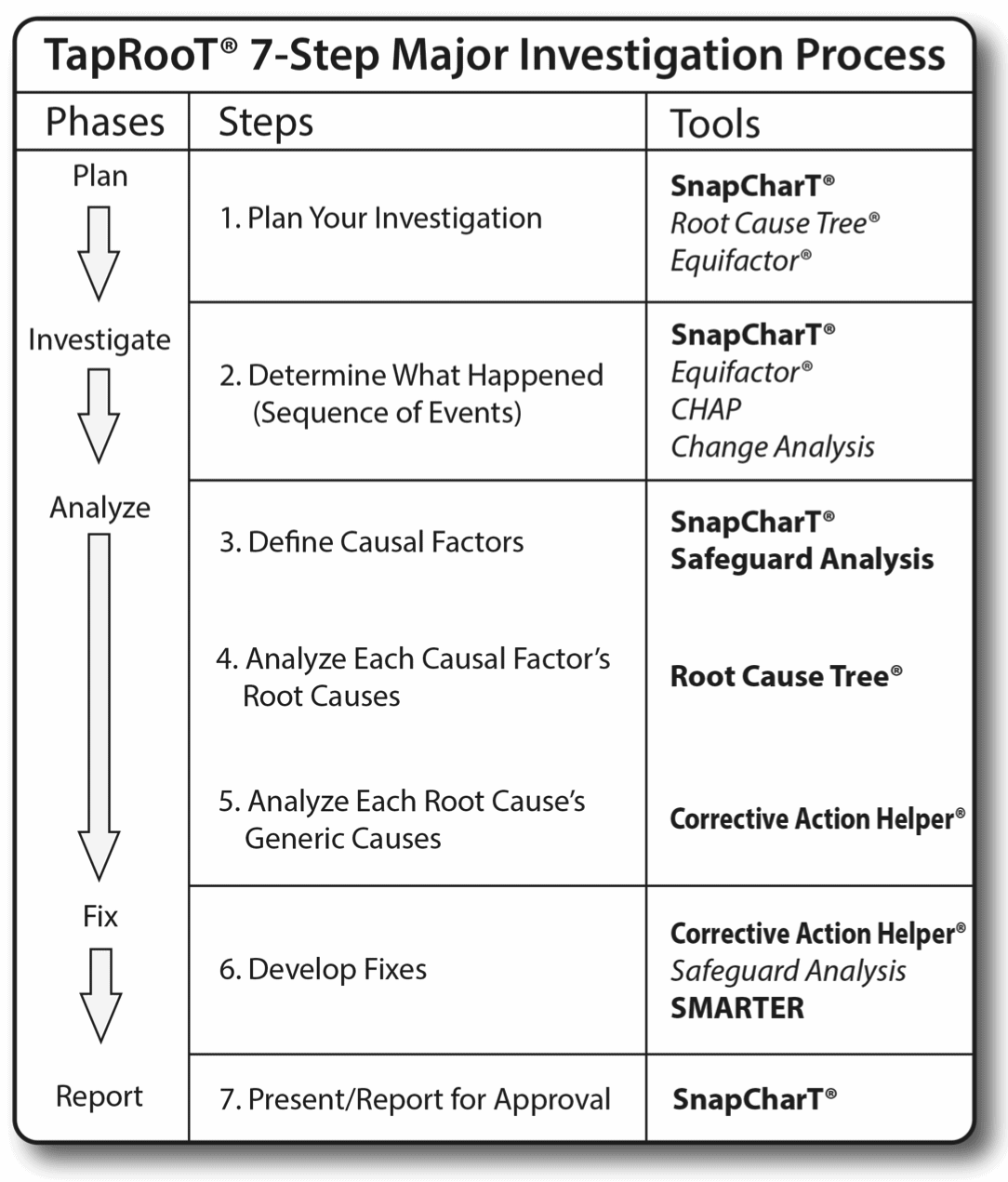
This process is slightly more complex but provides the guidance needed when a major accident needs a thorough, credible root cause analysis.
The Magic of the TapRooT® Root Cause Tree® Diagram
Several of the tools help guide the investigator but the one we will discuss here (and has the most power of the TapRooT® RCA System) is the Root Cause Tree® Diagram that is used in both of the processes above.
The Root Cause Tree® Diagram uses an expert system to guide investigators to the root causes of human errors and equipment failures.
The tree has a Human Performance Troubleshooting Guide that has 15 questions to help the investigator decide where potential root causes may be lurking. What kind of questions? Questions that a human factors expert might ask. For example, see number 1 below:
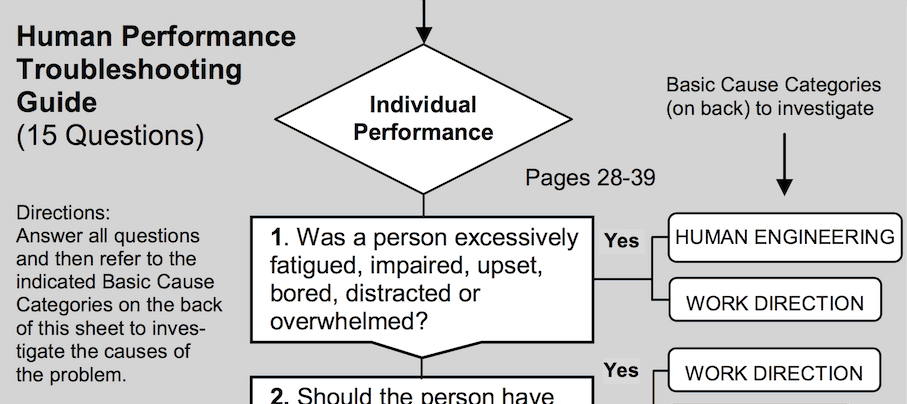
Do you consistently look into fatigue, impairment, distractions as part of your investigation of human errors? That’s the kind of guidance you receive when using TapRooT®.
The guidance continues with the Basic Cause Categories (seven of them) on the Root Cause Tree®. An example of one category, Human Engineering, is shown below.
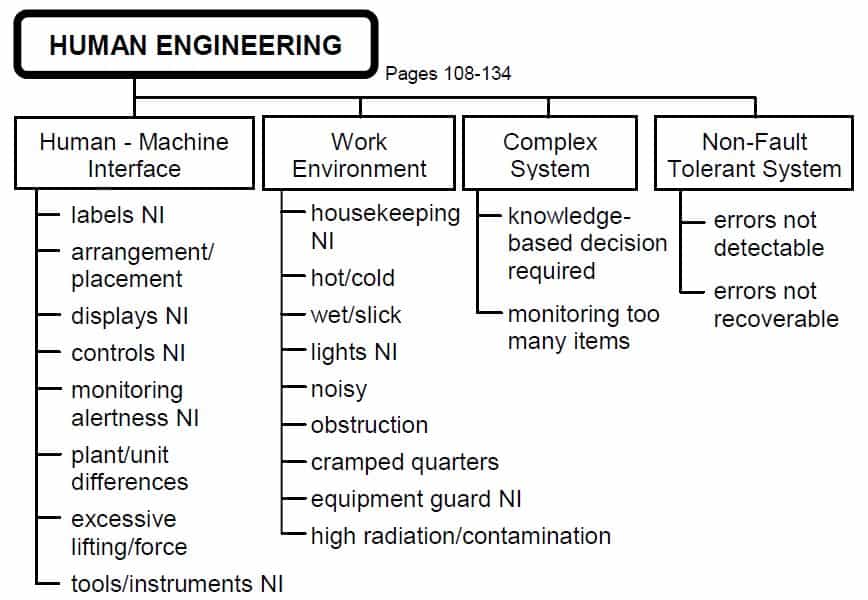
The terms used in the Root Cause Tree® are defined by questions that an investigator should be able to answer. These questions are in the Root Cause Tree® Dictionary.
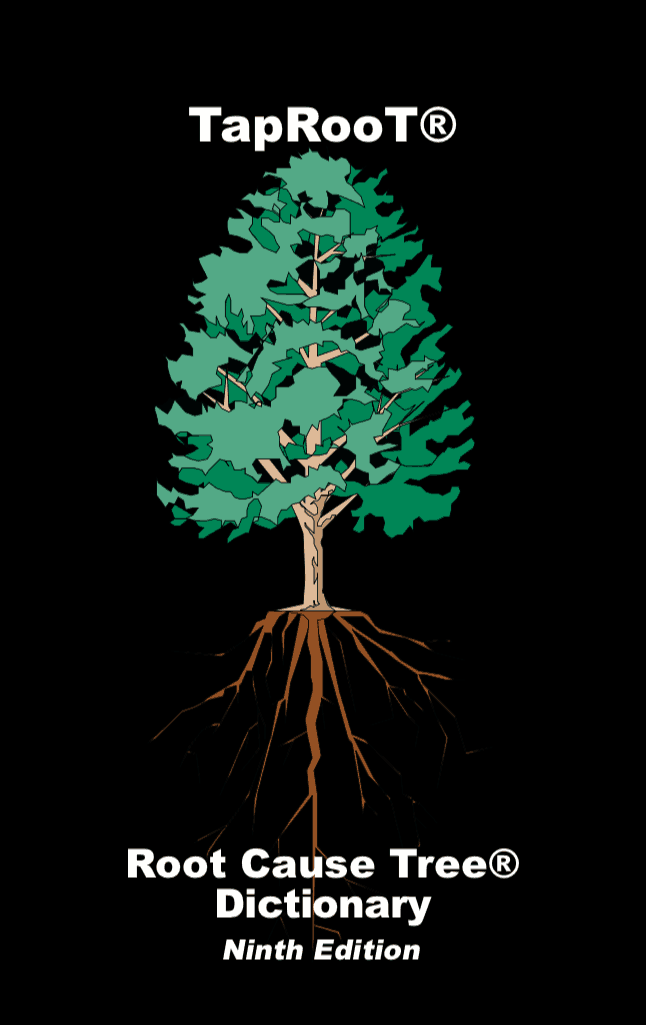
How do we know we have the right set of questions in the Guide, on the Tree, and in the Dictionary to guide your investigation? Simple … expert development, review, and testing.
Mark Paradies, Linda Unger, David Busch, and Dr. Paul Hass were among the initial developers. Their initial development was followed up by reviews by many human factors and root cause analysis experts including Dr. Charles O. Hopkins, Dr. Jens Rasmussen, Smoke Price, Dr. Alan Swain, Jerry Leaderer (first head of the forerunner of the NTSB), Larry Minnick, Heinz Bloch, Ann Ramey-Smith, Dr. Barclay Jones, and Dr. Joel Haight.
But the excellent development and initial review teams weren’t all there was. There was extensive user testing. It started with reviews of hundreds of incidents to test the system. That was followed by field user testing. That was followed by suggested improvements and reviews by the TapRooT® Advisory Board (currently 65 TapRooT® Users from around the world).
The improvement of the Root Cause Tree® has progressed for over 30 years and continues to this day.
Learn More About TapRooT® Root Cause Analysis!
Find out more about TapRooT® RCA Training at this LINK.
Find out about the dates and locations of our public TapRooT® RCA Courses (including virtual courses) at THIS LINK.




